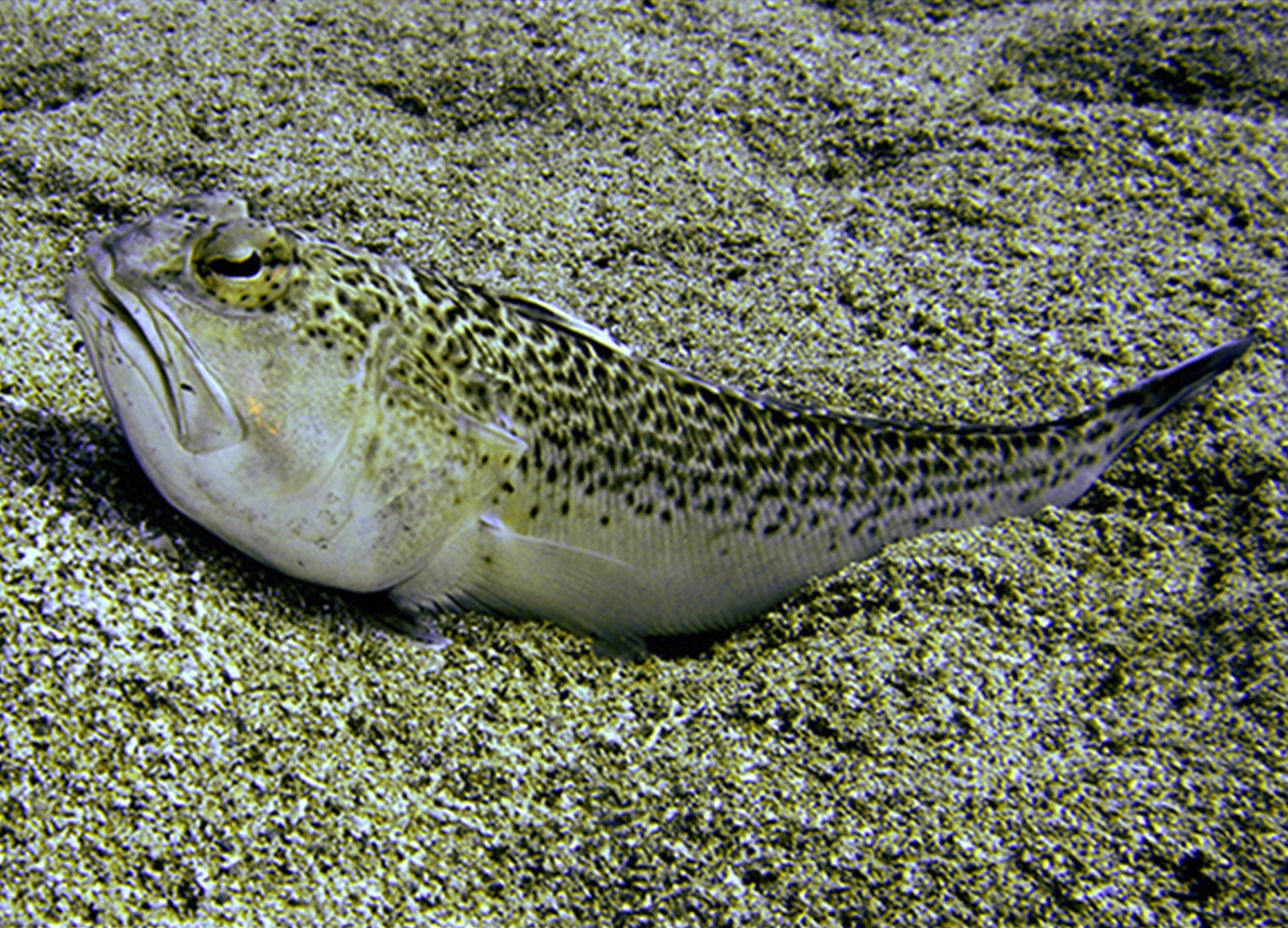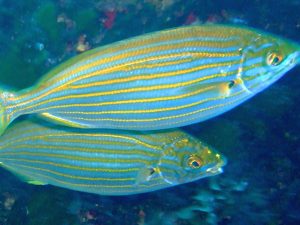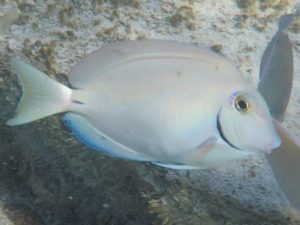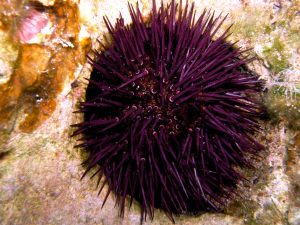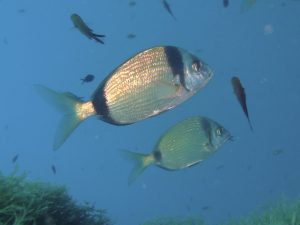Description
Weever fish
WARNING: If you stand on a Weever fish or get stung by touching or handling one, you will find it a very painful experience. Click here to see what to do.
Common Name: Weever fish
Scientific Names: Greater weever: Trachinus draco; Starry or Streaked weever: Trachinus radiatus; Spotted weever: Trachinus araneus and Lesser weever: Echiichthys vipera.
Description: These fish can grow up to 40cm but smaller fish are commoner. If the fish is not buried then their patterns will help tell them apart. The Starry weever has leopard-like spots, the Greater weever has groups of dashed bands making oblique streaks, the Spotted weever has a row of large dark spots along the sides and the Lesser weever is spotted or streaked with brown and yellow.
Distinctive Features: Weever fish have a mouth that slopes steeply upwards enabling them to hold their head off the seabed and to bury themselves whilst keeping the head above the sediment. Their clearly visible mouth line goes down at a sharp angle giving them a very grumpy look. In the similarly-shaped Lizardfish the mouth goes back almost horizontally which helps to tell which is which.
Abundance: Solitary. Only found on sand.
Habitat & Behaviour: These species, like the Lizardfish, live in and on the sand often buried, waiting for prey to come within the range of their waiting jaws.
Reaction to Snorkellers & Divers: Weevers do not immediately swim off when approached by surface diving snorkellers, which makes them vulnerable to spearfishing. They are less wary of divers.
Text: Bob Earll
Photo: Russell & Gill Bennett
Video: Julia Jagoditsch

